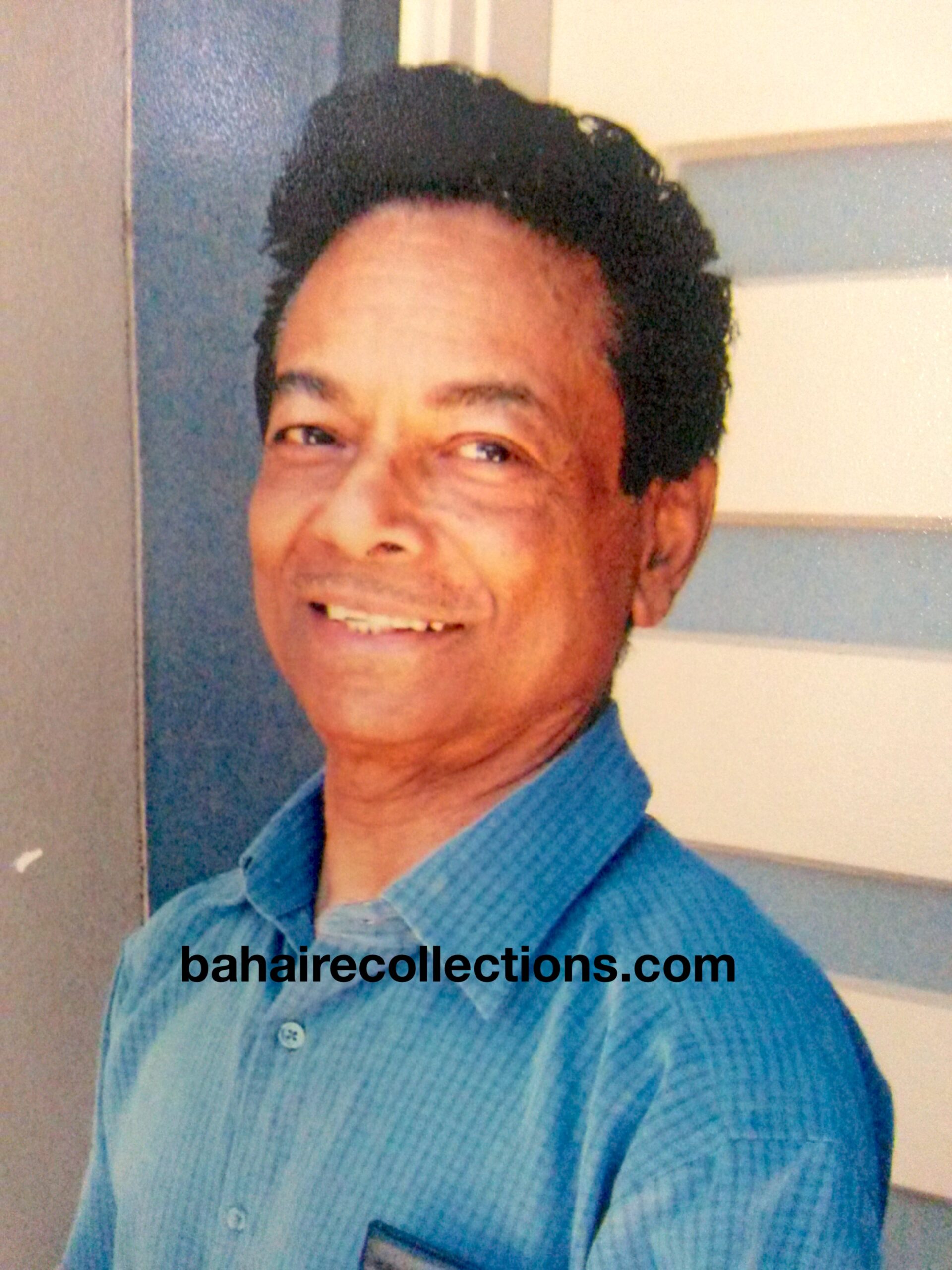REMEMBERING TUSHAR KANTI-PAUL
1936 to 1 July 2020
This is the story of the first Bahá’í youth to have accepted the Faith in Malaysia and one who also became the first home-front pioneer as well. This story brings to the fore some of the salient services rendered by this exemplary youth in the early days of the development of the Faith in this country.
The circumstances leading to the acceptance of the Faith by Tushar have been dramatic. While Dr. K. M. Fozdar and his wife Shirin Fozdar from India were pioneering in Singapore in the early 1950s, they engaged in writing articles and placing advertisements on the Faith in the local newspapers to reach a wider circle, with hope of attracting waiting souls. In early 1954, one such advertisement in the Straits Times daily caught the attention of three brothers from the Bengali community in Malacca: Mirinal Kanti Paul, Pijush Kanti Paul and Tushar Kanti-Paul. Mirinal was the eldest and was a good writer, often contributing articles to local magazines. The other two were students taking the Cambridge School Certificate Examinations. The advertisement in the Straits Times read “Information on Bahá’í World Faith – write to Shirin Fozdar P. O. Box 1779, Singapore.” On reading this advertisement, the Paul brothers wrote to Shirin Fozdar and within a few days were delighted to receive a loving reply along with two yellow-coloured pamphlets on the Bahá’í Faith. As religious matters were sensitive within their family, these brothers decided to hide the pamphlets from their Hindu parents, with the thought of showing it to them when the opportune moment came by. However, they continued communicating with Shirin Fozdar with great enthusiasm to get to the root of these inspiring glad tidings.
Meanwhile, as a follow-up with their communications with Shirin Fozdar, the Paul brothers arranged for a big tea party at their home at 2886C, Tan Teck Chye Avenue, Klebang Kechil, Malacca, to enable Shirin Fozdar to introduce the Faith. Mr. Saurajen Ganesan, the first believer of Malacca town brought Shirin Fozdar to speak at this fireside. That was the first Bahá’í fireside in Malacca. A total of 35 friends came for the tea party cum fireside. Madam Hiran Prova Paul (nee Rai), the mother of the Paul brothers, prepared cakes and other refreshments, not aware of exactly what the event was. Mr. Jamini Kanti Paul, the father of the Paul brothers, was upstairs when the fireside was going on in the spacious ground floor. Tushar says that his father was listening to Shirin’s talks from upstairs. In her talk, Shirin quoted a passage from the Hindu scripture of Baghavad Gita, in Sanskrit, which Jamini Kanti Paul heard from upstairs where he was seated. On a later day, Jamini Kanti Paul commented to his sons that he had high respects for Shirin who was well-grounded in Hinduism as well as the Bahá’í Faith.
Even before the fireside took place, the Paul brothers were already convinced about the truth of the mission of Bahá’u’lláh through the communications and literature received from Shirin Fozdar. But at this fireside all doubts vanished from their hearts. After the tea party the Paul brothers accepted the Faith of Bahá’u’lláh by signing Bahá’í declaration cards on 15 March 1955. Mirinal and Pijush were adults and so they signed the declaration cards for adults, while Tushar signed in a special card for youth. Thus, Tushar was the first to sign his name on a youth declaration card in Malaya. Tushar Kanti-Paul, by his own account was only 14 years and 7 months when he accepted the Faith, although there are claims by others that he accepted the Cause when he was 17 years old.
Shirin was naturally happy that a wonderful beginning was taking place in Malacca. To Tushar, Shirin Fozdar said, “Tushar, you are the first Bahá’í youth of this country.” Then turning to all the three brothers she said, “Now you are my true sons.” That day, Shirin Fozdar became Mummy for the three brothers, and that was the beginning of Shirin Fozdar turning “Mummy” for all the Malaysian Bahá’ís as well, and she henceforth was referred to as the Spiritual Mother of the Bahá’ís of Malaya. She also became the “Spiritual Mother” of the Bahá’ís of South East Asia.
As the Faith was growing fast in Malacca the Bahá’ís needed a meeting place to have regular activities. In 1955, the parents of the Paul brothers went back to India for a period of five months and their house soon became a hive of activities for the Faith. It was in this house that the first Local Spiritual Assembly was elected on 21 April 1955. Tushar and Pijush cooked and played some popular Hindi songs on their gramophone player. Dr. K. M. Fozdar was in a happy mood on account of the formation of the first Local Spiritual Assembly in Malacca and started to sing a few old Hindi songs. Yankee Leong from Seremban was also there, and he spoke some words of encouragement, after which the Local Spiritual Assembly was elected.
Meanwhile the Fozdars then turned their attention to the parents of the Paul brothers who were already familiar with the Faith. In their subsequent visits, they took the parents for dinner and spoke about the Faith over dinner. Jamini Kanti Paul, the father, decided to give full freedom to his children but he himself did not become a Bahá’í and remained a devout Hindu. While he loved the Bahá’í Faith, he feared retribution from the small but close-knit Bengali community in Malacca. He passed away in 1967 in Malacca and had a traditional Hindu funeral and cremation. Their mother, Hiran Prova Paul, coming from an orthodox Bengali background remained a Hindu at that time.

Jamini Kanti Paul and Hiran Prova Paul
From the day Tushar accepted the Cause, he was on fire with the love of Bahá’u’lláh and His glorious Cause. His rise in the Faith was meteoric and was constantly on the move involving in as many activities as possible and availing himself whenever there was a need. He picked up knowledge of the Faith very fast, and his first spiritual nourishment came from Dr. K. M Fozdar and his wife Shirin who made constant visits to Malacca town to deepen the new believers. After the passing of Dr. Fozdar in 1958. Mrs. Shirin Fozdar continued to deepen Tushar on her visits to Malacca. Tushar received further nourishment from the several visiting Bahá’ís from abroad, principally the Hands of the Cause of God who diffused divine fragrances through what they spoke at the early gatherings. Some of the Hands whom Tushar met and basked under their guidance in those early days on the Malaysian soil were Mr. Shu’á’u’lláh ‘Alá’í, Mr. Abu’l-Qásim Faizi, Miss Agnes Baldwin Alexander, Dr. Raḥmatu’lláh Muhájir, Amatu’l-Bahá Rúhíyyih Khánum, and Mr Harold Collis Featherstone.
Tushar holds a special place in the history of the Faith in this country, not only as the first youth to have accepted the Faith, but as the first to become a home-front pioneer as well. It was Tushar Kanti-Paul who opened Jasin to the Faith. Once the Local Spiritual Assembly was formed in Malacca town during Ridván 1955, Dr. and Mrs. Shirin Fozdar requested Tushar who was about to start his job as a teacher to consider the possibility of moving to Jasin district as a pioneer. In 1955, Jasin was declared a ‘black area’ owing to communist insurgency in that town. The communist movement in Malaya was declared illegal. People generally feared going into areas dominated by communist insurgents. But here was Tushar who loved the Faith more than fearing his own life. The Faith had to be served. He approached the Education Department in Malacca and asked for a voluntary posting to Jasin and secured a transfer to work in Jasin English School in 1955. Thus, Tushar Kanti-Paul became the first home front pioneer in Malaya.
When in Jasin, Tushar was fully committed to teaching the Faith in every possible way. In 1957, Raymond Peter who was working as a Probationary Health Inspector in Jasin befriended Tushar. Peter had a motorcycle on which he would take Tushar Kanti-Paul for teaching trips in the rubber plantations. There, Raymond would translate talks by Tushar from English into simple Tamil. Whenever Tushar was tired, Raymond would then take over and talk about the Faith! When asked, Raymond was adamant that he was not a Bahá’í and that he was only helping Tushar in his teaching work. It was in March 1958 that Peter himself accepted the Faith. Leong Ho Chew from Malacca town was posted to Jasin while Anthony Louis too came to work in Jasin town. They all teamed up for activities. One of the regular activities of the Jasin Bahá’í community was to organise firesides. Leong Ho Chiew, Anthony Louis and Tushar Kanti-Paul organised these firesides in Leong Ho Chiew’s quarters and Saurajen and Leong Tat Chee would give talks. After participating in the first Bahá’í Summer School in December 1957, Miss Jeanne Frankel an American pioneer and her mother Margaret Kelly Bates also came to assist in the development of the Faith in Malacca. With all of them working together, the first Local Spiritual Assembly of Jasin was elected at Ridván 1958 with Tushar becoming its secretary.
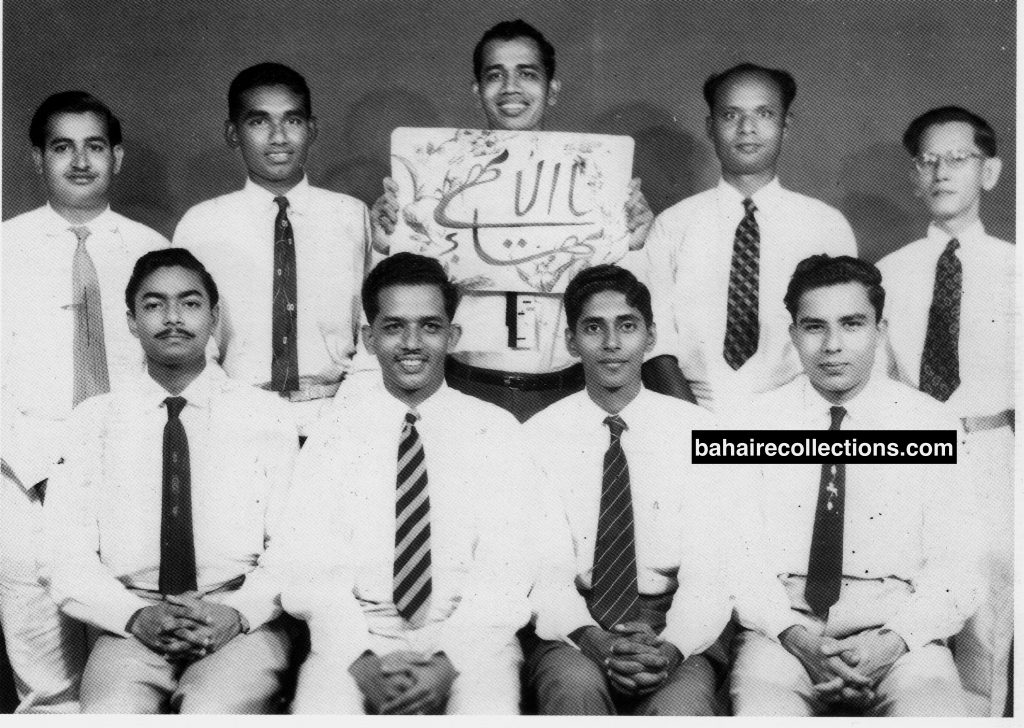
First Local Spiritual Assembly of Jasin, 1958. Seated (L-R) Tushar Kanti-Paul (Secretary) E.A. Fernandez (Chairman), Arthur Knight (Vice Chairman), Chakrabarthy (Treasurer). Back row (L-R) Surinder Singh, Raymond Peter, Anthony Louis, Arumugam Ramanan and Goh Tiow Li

Some believers of Malacca state in a group photograph taken in a studio in Jasin, to celebrate the election of the first Local Spiritual Assembly of Jasin. Seated (L-R) Surinder Singh, Lena Saurajen, Margaret Kelly Bates, Elaine Saurajen, G. Saurajen. Standing in the middle row (L-R) Chakrabarthy, Leong Ho San, Raymond Peter, Leong Tat Chee, Arthur Knight, Arumugam Ramanan, Goh Tiow Lim, Jami Subramaniam. Back row (L-R) Tushar Kanti-Paul, E.A. Fernandez, Kumara Das, Anthony Louis and Leong Ho Chiew
Tushar was obsessed with engaging in estate teaching as the simple estate people were very receptive to the message of Bahá’u’lláh. Tushar went to several estates in Malacca state in the company of Tamil speaking believers including S. Vasudevan. He was also on teaching teams that were formed to teach in both urban and estate areas.
While stationed in Jasin, Tushar was actively involved in almost all activities in several parts of Malacca state. He was an active participant in the Teaching Conference held in Malacca in July 1957, was one of the earliest teaching conferences in the country. The Boy Scout Headquarters in Mata Kuching Road was one more popular spot where many activities took place in the early days in which Tushar participated. Tushar participated in the first Summer School held in December 1957 at the residence of Mr. G. Saurajen at 17, Fort Terrace. When Dr. Muhajir called for a special meeting with some 25 believers who turned up for the Summer School to discuss plans for the whole of Malaya, Tushar was one of them Dr. Muhajir selected. Tushar took up some responsibilities that were tasked to him. That was the first Summer School for Tushar and he made sure he participated in the early Summer Schools held in Malacca.
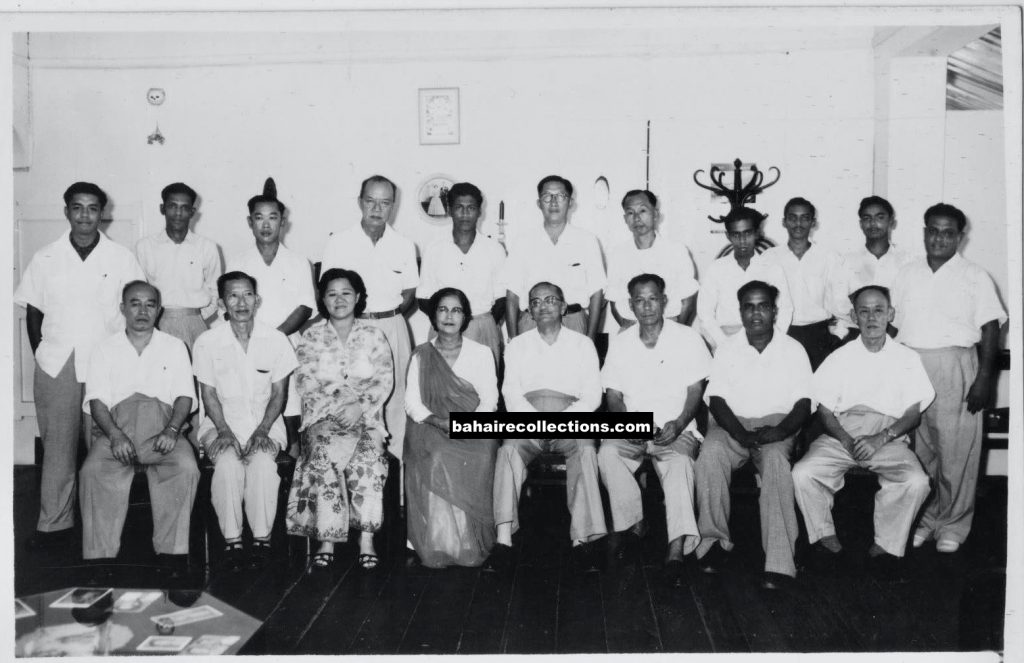
Teaching Conference of July 1957. Seated second from left is Yankee Leong, third from left is Lena Saurajen, fourth from left is Shirin Fozdar, fifth from left is Dr K.M. Fozdar. Standing at the extreme right is Saurajen, and to his right are Tushar Kanti-Paul, Pijush Kanti Paul and Mirinal Kanti Paul. Kumara Das stands fifth from left, with Leong Tat Chee sixth from the left

A gathering at the Boy Scout Headquarters, circa 1958. Kumara Das is in the middle with black necktie. Anthony Louis is squatting at the extreme right. Koh Ai Leen is standing at the extreme right. Lily is standing third from right, Raymond Peter stands eighth from right. Leong Ho San is standing fifth from the left, with M. Maniam standing in front of him. The three squatting from left are Pijush Kanti Paul, Tushar Kanti-Paul and Jami Subramaniam
In those days there were several teaching conferences organized in Malacca. Tushar participated in the First Pan- Malayan Teaching Conference held on 8 May 1960 at Happyland Hotel in Klebang Kechil, Malacca. The conference was graced by Hand of the Cause Dr. Muhajir. At that conference a Teaching Planning Committee was established, and Tushar Kanti-Paul was appointed onto that Committee.
Yet one more area of Tushar’s involvement was teaching the Cause to the Asli believers. After the conclusion of the Pan-Malayan Teaching Conference in the Happyland Hotel in Malacca on 8 May 1960 a team went to this Asli area, headed by Dr. Muhajir. Tushar was among those who followed Dr. Muhajir to this Asli area.
At the Summer School of 1960 held in Port Dickson Dr. Muhajir suggested the appointment of state representatives to open virgin areas in the country to the Faith. Tushar was one of those appointed to open Masjid Tanah area for the Faith.
Tushar had a painting talent which he used for the Faith. In 1961, Tushar received a government scholarship and underwent a Specialist Teachers’ Course in Arts and Crafts at the Teachers Training Institute at Cheras Road, Kuala Lumpur. Tushar completed his course and returned to Malacca in 1961 and became actively involved in Bahá’í activities. Tushar became the secretary of the Local Spiritual Assembly from 1962 to 1966 when he left for Australia for good. He was an able administrator who kept the records in order.
The early part of 1961 was the time when Malacca community faced some crisis and emerged victorious. There was a new zeal among the believers to take up the Faith to a higher pedestal. Tushar was fully committed to this task. In 1961 the Watch Committee was appointed by the Local Spiritual Assembly of Malacca Town. Some of the most active members were appointed on this Watch Committee and their task was to assist in the consolidation of the community, especially in gathering Bahá’ís who had not been attending Nineteen Day Feasts and fireside meetings for some time. Among those who were appointed on this committee were Pijush Kanti Paul as Chairman, S. Vasudevan as Vice Chairman, Tushar as Secretary and Jami Subramaniam, Nadarajan, Pravin, Nadarajah and Maniam as members. The committee worked hard and provided transport for those living far away and sent out attractive reminder cards about dates of meetings, firesides, feast days, Bahá’í Holy Days and other important events. The committee members also made visits to the homes of Bahá’ís who were not seen at Bahá’í functions for a considerable period of time. Soon the Malacca town community became very active registering good number in the attendance at feasts and other activities.
Tushar also has the distinction as one of those conducting Bahá’í wedding even as a bachelor. On 31 August 1961, Maheshwar Dayal a pioneer from India to Singapore and later to Malaya, married a local girl by the name of Teh Poh Yoke. That was the first Bahá’í wedding to be officially endorsed by the Local Spiritual Assembly of Kuala Lumpur. This was a simple wedding conducted by Tushar the Malacca Bahá’í youth, at the residence of Maheshwar Dayal in Petaling Jaya. Many Bahá’ís from Kuala Lumpur, Seremban and Malacca communities came to witness this wedding.
Tushar, who was a well-read believer, was also selected to be a speaker at various Bahá’í activities. When the Bahá’í youth of Seremban organized the first Pan-Malayan Youth Conference in the Negeri Sembilan Indian Association Hall in Seremban town from 16 to 18 December 1961 Tushar spoke on the topics of “Science and Religion” and “Words of Wisdom” and his talks were well received by the participants. Later, on 6 October 1963 the youths of Seremban organized a Regional Youth Conference where Tushar spoke on “Words of Inspiration and Encouragement.” In the English group there was a written test on the Bahá’í Administration and Tushar Kanti-Paul won a prize, which was not a surprise to many who had known of deep knowledge on the Faith.
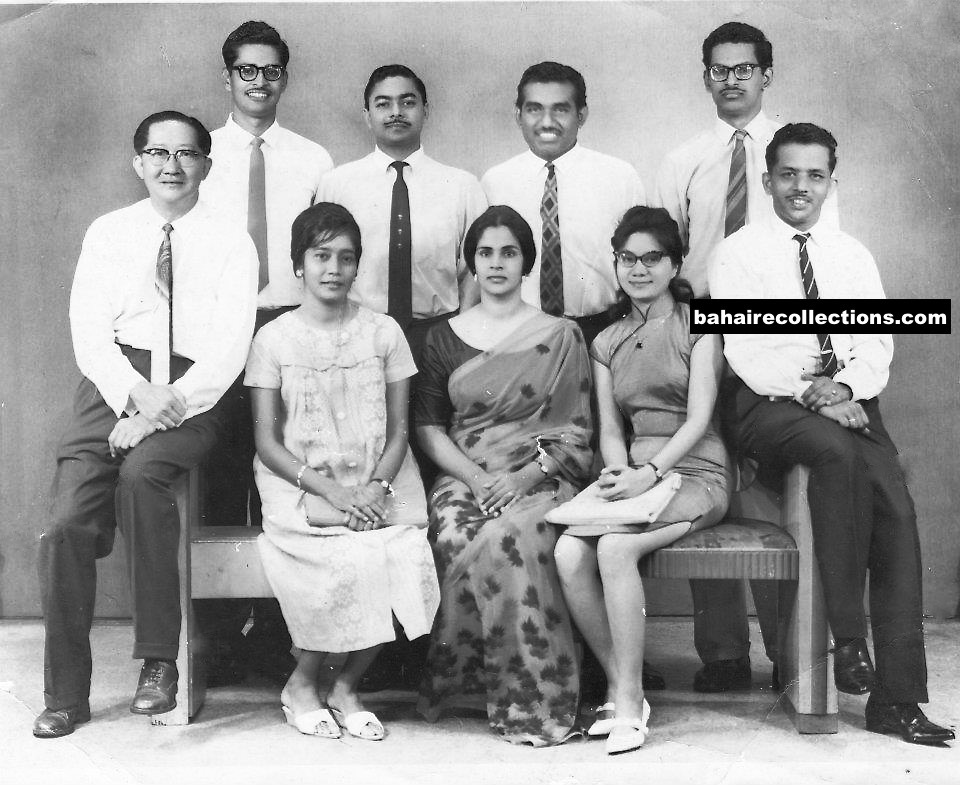
Local Spiritual Assembly of 1963. Seated (L-R) Daisy Das, Betty Fernandez, Chiang Kim Lin. At the extreme left is Leong Tat Chee, and at the extreme right is E.A. Fernandez. Standing (L-R) S. Vasudevan, Tushar Kanti-Paul, Raymond Peter and S. Bhaskaran
Meanwhile Tushar was one of those who attended the First Bahá’í World Congress was held at the Royal Albert Hall in London from 28 April to 2 May 1963. When the National Convention was held for the election of the first National Spiritual Assembly of Malaysia Tushar was elected as a delegate representing Malacca town community.
Producing literature for the Faith was one more area of activity for Tushar, at a time when there were not too many local literature published. In 1964, Tushar and S. Bhaskaran teamed up and produced a booklet called “Manual for Pioneers.” It contained extracts from the book “The Advent of Divine Justice”. Dr. Muhajir who was very pleased with that booklet requested them to send two copies to the Universal House of Justice, as he felt the Universal House of Justice should have a record of all publications.

Summer School held in August 1965 at the Malacca Youth Hostel. L-R: Tushar Kanti-Paul, Rustam and Nirmala
Tushar had a special role in the National Teaching Institute building that was erected in Bukit Baru, Malacca, which was the first of its kind in Malaysia and the whole of Southeast Asia. In 1964, the National Spiritual Assembly of Malaysia set up a Building Committee to develop that national teaching institute building Kumara Das and Tushar looked into the legal aspects. By July 1965, the Institute building was completed. When it was completed, Tushar an artist himself painted a mural on one side of the inner wall. To this the National Spiritual Assembly felt very proud and appreciated his generous gesture.
Tushar was also becoming popular in the outside world as painter of rare kind. Tushar had developed a unique way of painting. While painters used brushes to paint, Tushar used finger techniques. Tushar was an art teacher at the Gajah Behrang Secondary School in Malacca town. At school he was teaching painting using brush and watercolor. It was at these classes that Tushar used to glorify great painters like Picasso to the student. He inspired many students to take up painting as a hobby. He had such a strong passion for painting and the painters. But he did not teach finger painting at school. Finger painting technique was an art that he developed for his own passion. In the 1960s the Esso Oil company in Malaysia which had heard of his talent sought Tushar to contribute finger paintings to their magazine named PELITA, which he did and were well received.
Tushar’s fame and name were noised outside Malacca too. In 1965 the Arts Council of Malaysia sponsored an exhibition for the paintings by Tushar at the British Centre in Kuala Lumpur. It was attended by thousands of art admirers who watched Tushar’s finger painting technique.
His talents were noised abroad too. In 1966 Tushar went to Australia when sponsored to conduct an art exhibition and a keynote speaking tour. While he was on tour he met Miss Kathleen Hewson, daughter of early believers Thelma and Bill Hewson in Gawler, South Australia. He married Kathleen Hewson on 17 December 1966 at a much-publicized Bahá’í ceremony, which was held in the garden of the bride’s home in Willaston. Hand of the Cause of God Mr. Collis Featherstone conducted the wedding while Auxiliary Board member Howard Harwood was the Master of Ceremonies. Guests of many nationalities were present, and they came to know of the Faith when Mr. Featherstone gave a beautiful talk. And press publicity that followed the wedding exposed many others to the Faith. With this wedding Tushar had migrated to Australia.
The elder brothers of Tushar- Mirinal and Pijush had served the Cause effectively in their own ways before migrating abroad in 1964. Mirinal Kanti Paul migrated to take up a post as headmaster of Dryberg College in Singapore before migrating to London in 1964 to pursue his interests. Mirinal passed away in London in August 1988 Pijush Kanti Paul migrated to Toronto in Canada in 1964 as an artist and opened an art shop selling his paintings. He had organised a number of exhibitions in Toronto, and was always in touch with the believers and the Bahá’í community in Toronto.
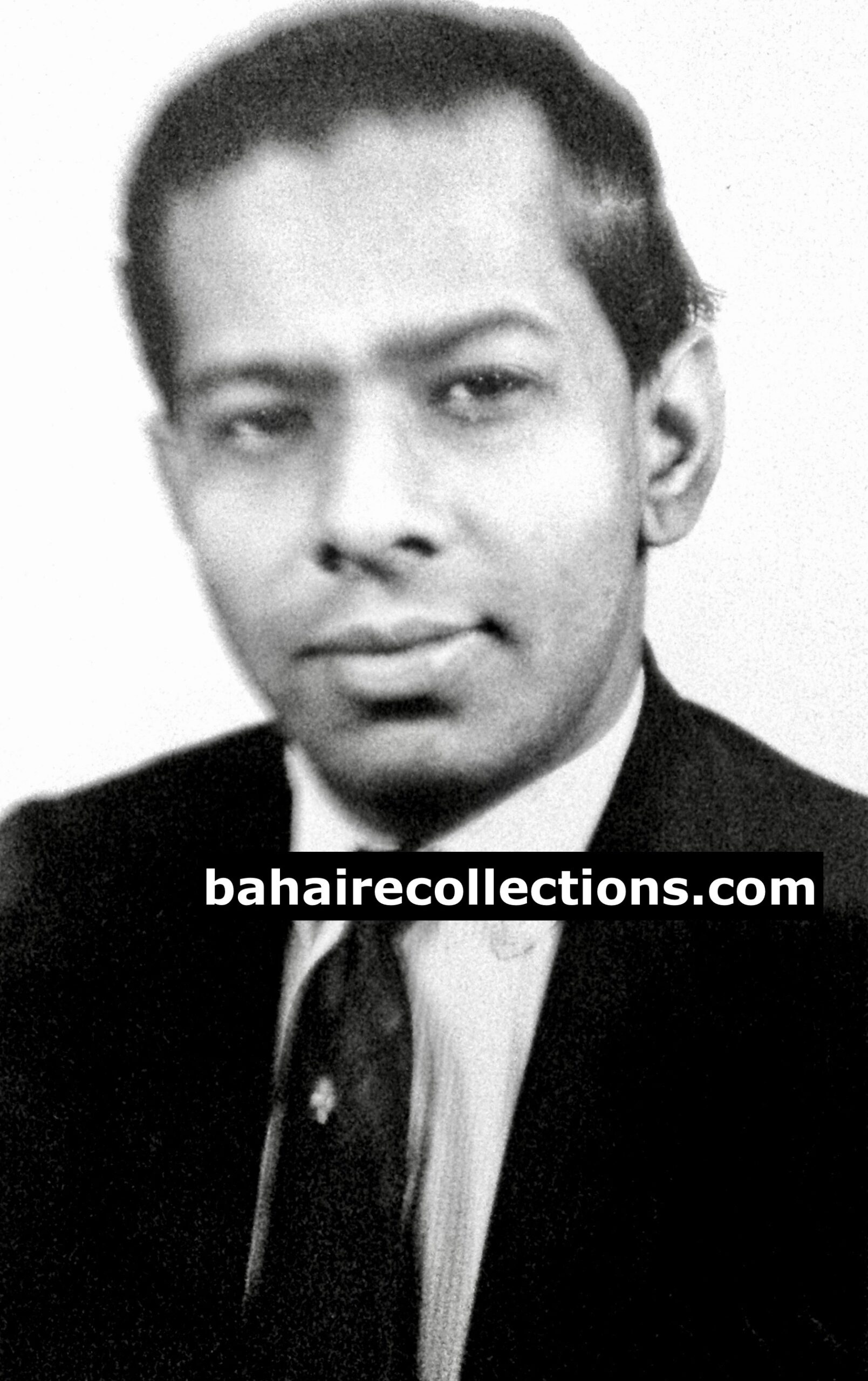
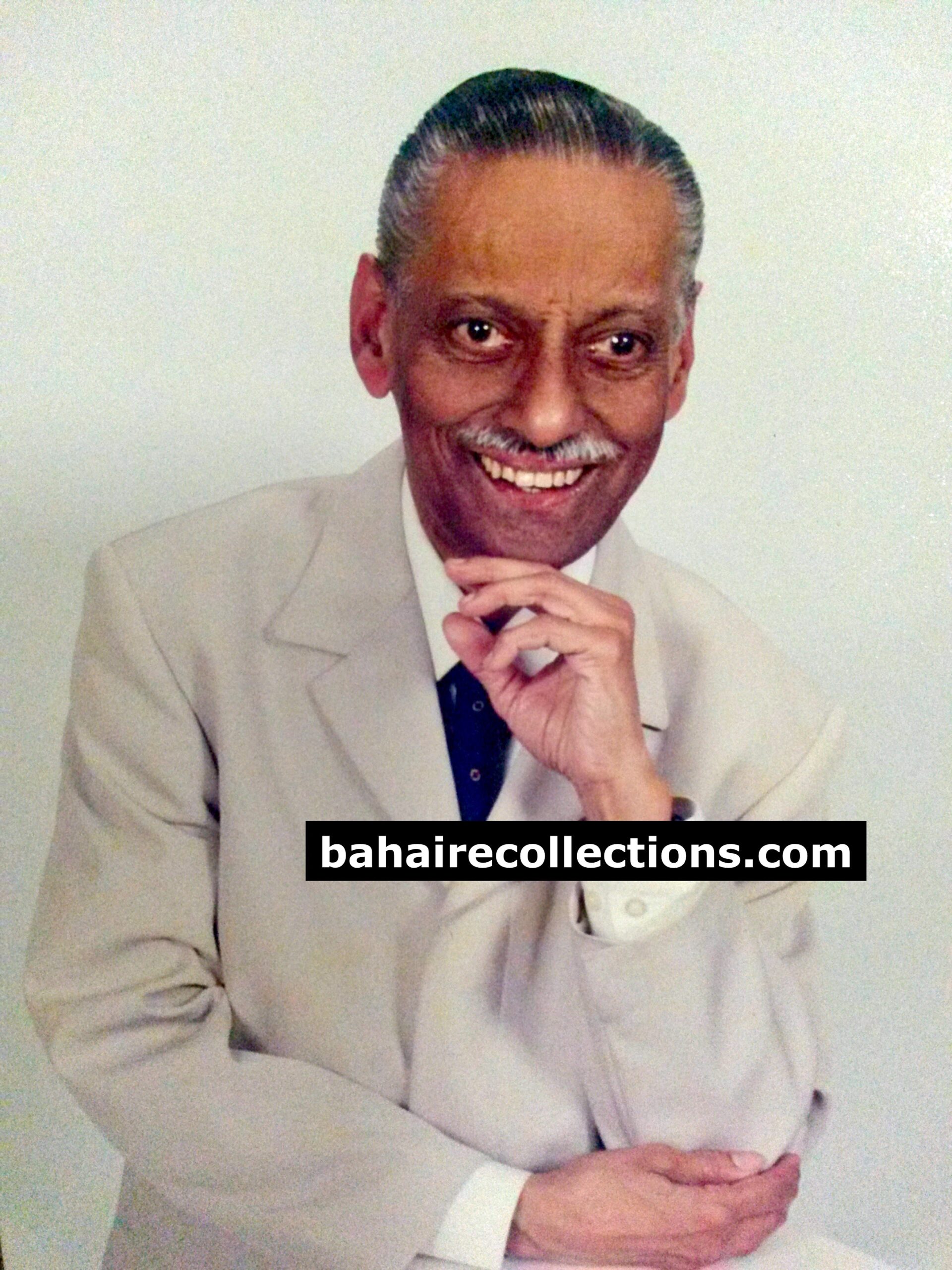
Mirinal Kanti Paul (L) and Pijush Kanti Paul (R)

A finger painting of Pijush bought by Lum Weng Chew of Toronto.
While in Australia, Tushar’s heart was still in Malaysia where he had discovered and grown in the Faith. Tushar came on a visit to Malaysia with his wife to attend the national convention held in the Third Residential College at University Malaya, Kuala Lumpur in 1967. When asked to speak at the convention, Tushar spoke on the many activities that took place in many parts of Australia in which he was involved, and registered great admiration for the way in which the Australian Bahá’ís coped with their problems and challenges. There were two other family members who came along. One was Tushar’s sister Mamata Paul, an active secretary of the Youth Committee in Malacca. The one other family member who came for this convention was the mother of Tushar, who was recently widowed. It was at this Convention that the mother too accepted the Faith. Mamata and her mother went to Australia in the year April 1973.
Back in Australia, he established himself as a professional artist. He was very popular in Australia as a believer and as an artist. For a period of time, he served as Auxiliary Board member for South Australia and Northern Territories. Tushar had also traveled to meet the Aboriginal people of Australia. He was an art teacher in a High School in Gawler for more than thirty years. He has five children through this marriage to Kathleen and had naturally become a citizen of Australia.
With most of his family members living in other states of Australia or abroad, Tushar moved into a nursing home in Adelaide. He was visited by his son Ga-len, the only family he had in South Australia, as well as the local Bahá’ís of the communities of Enfield. Gawler and Light. At the nursing home he was living in a double room where he set up his canvasses and continued with his painting. With such a passion for painting Tushar held art classes for his interested staff and fellow inmates of the nursing home. He also went to other residential facilities to organize similar art classes. At every given opportunity Tushar would discuss the Faith with those he met and took great pleasure in relating and recalling the stories of the early days of the growth of the Faith in Malaysia.
Tushar’s last appearance was at the Bicentennial Celebrations of the Birth of Bahá’u’lláh held at the Gawler Art Gallery. Mrs Joanne Hughes, curator for the Bahá’í Exhibition for the Bicentennial Celebrations had made arrangements for the finger paintings of Tushar to be displayed. He sent in some six of his best paintings. He was in a blissful mood at the gathering, and moved with some of his old friends. Malaysian couple Mr. Mayalagan and his wife Kalaiselvi who had also migrated to Australia in 1997 had a brief conversation with Tushar. They were very impressed with the finger paintings of Tushar depicting nature. The Bicentennial Celebrations of the Blessed Beauty was about the last major Bahá’í event in which Tushar participated. And the last Bahá’í book he was most glad to read was DAWNINGS – An Account of the Early Days of the Bahá’í Faith in the State of Malacca by the writer of this story. He was reported to have been overwhelmed to read the development of Malacca as a premier community in Malaysia.
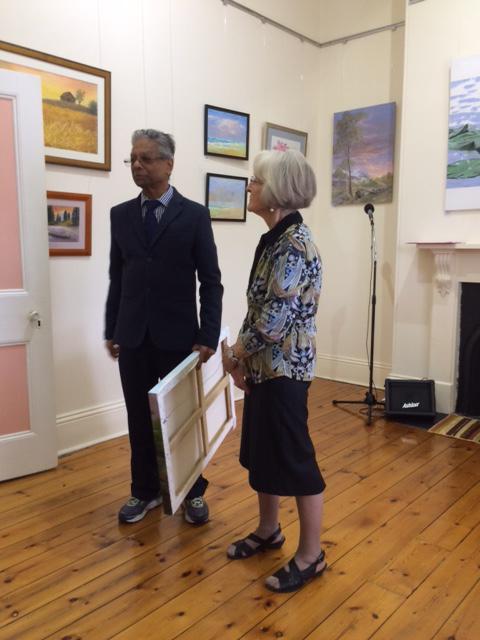
Tushar with Mrs Joanne Hughes
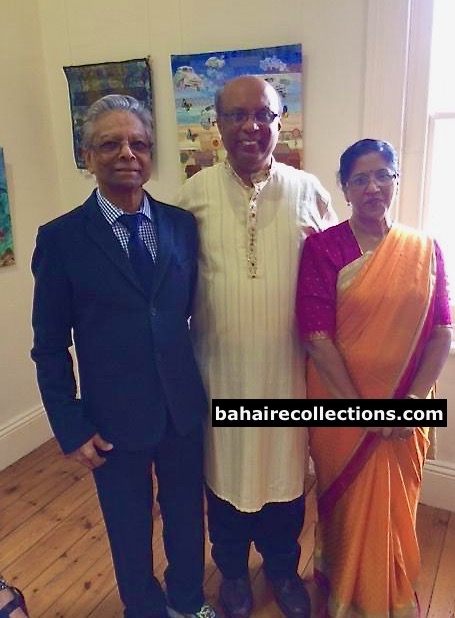
Tushar, Mayalagan and Kalaiselvi
This star servant of the Cause who had served the Cause with distinction in many ways passed away on 1 July 2020 in an aged care facility in Adelaide. Tushar was buried according to Bahá’í rites on 13th July, 2020 at the Willaston Cemetery situated in Dawkins Avenue at Willaston, South Australia. His indelible services for the Cause in the early days are well remembered in historical memory. Indeed, the Bahá’í community owes a debt of gratitude to the early heroes of the Cause and Tushar stands out as one of those outstanding worker. Many in the generations yet to be born would emulate the exemplary path Tushar had set as the first Bahá’í youth in Malaysia, and as the first home-front pioneer as well.
A. Manisegaran
31 July 2022
Copyright@bahairecollections.com
You may leave your comments at: info@bahairecollections.com
